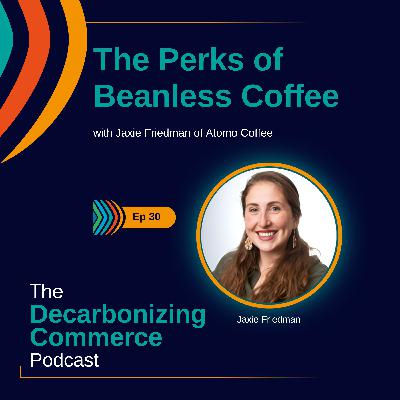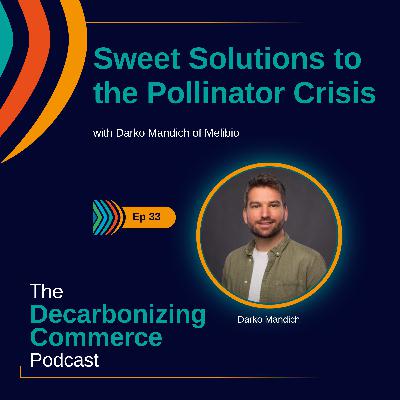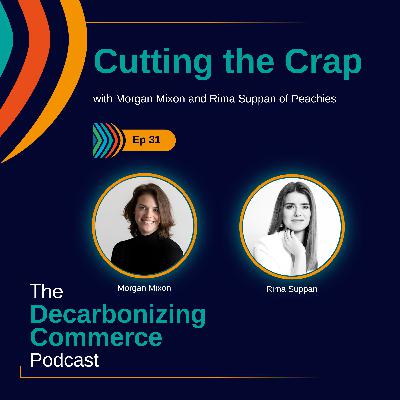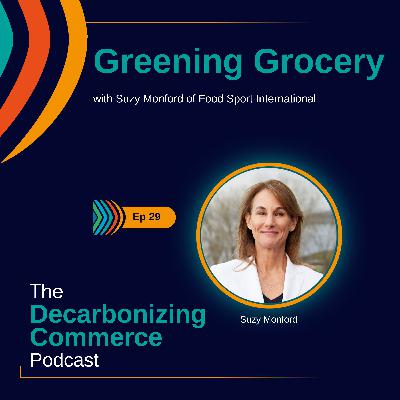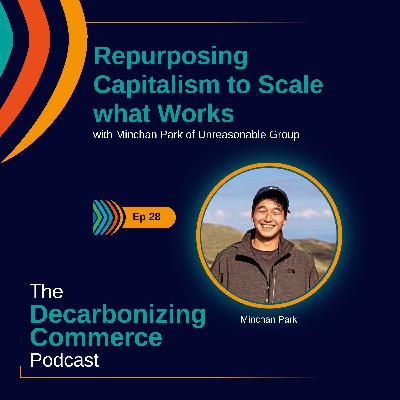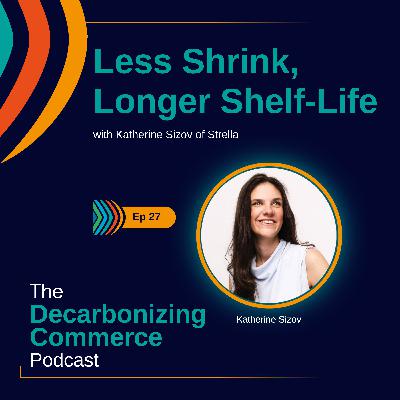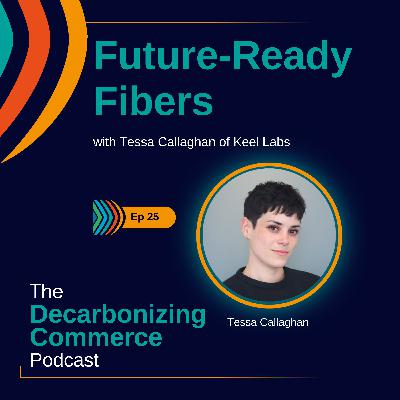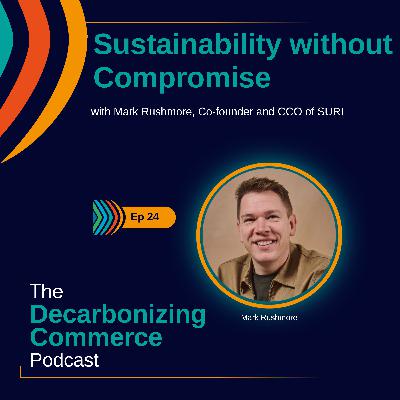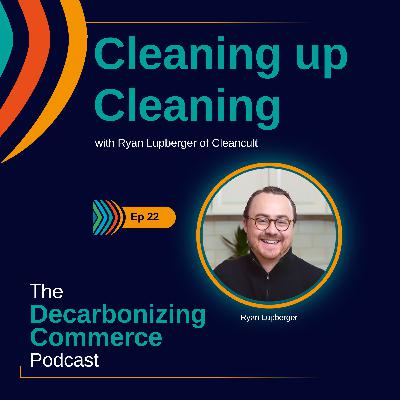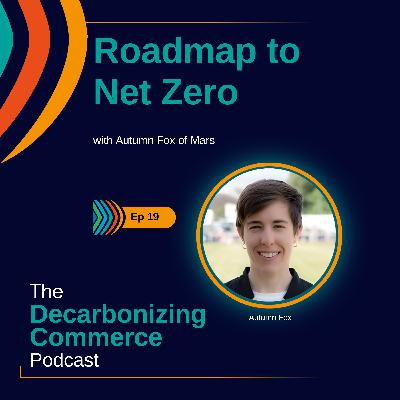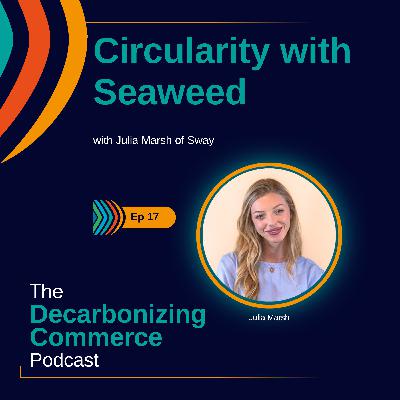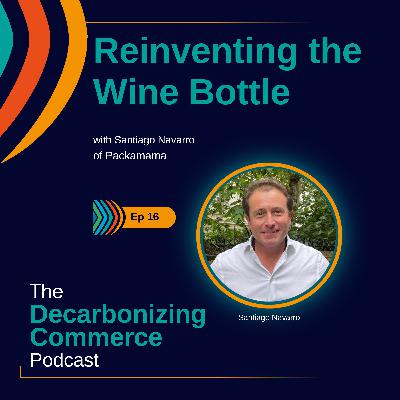The Perks of Beanless Coffee with Jaxie Friedman of Atomo Coffee
Update: 2024-07-25
Description
Host Keith Anderson is joined by Jaxie Friedman, Sustainability Manager for Atomo Coffee.
Together, they discuss the innovative approach Atomo takes towards creating sustainable coffee. Jaxie delves into the environmental challenges facing the coffee industry, including emissions and deforestation, and how Atomo's upcycled ingredients contribute to reducing their carbon footprint. The conversation also explores the complexities of measuring and managing these impacts, emphasizing the importance of maintaining product quality while making sustainable choices.
Learn more about Jaxie Friedman:
- Link to Atomo Coffee’s website
- Link to Jaxie Friedman’s LinkedIn
To listen to the full episode join our Plus or Pro memberships at decarbonize.co:
If you enjoyed this episode then please:
- Follow, rate, and review on Apple Podcasts
- Follow and rate on Spotify
Learn more about Decarbonizing Commerce at decarbonize.co
TRANSCRIPT BELOW:
Keith Anderson: Welcome to Decarbonizing Commerce, where we explore what's new, interesting, and actionable at the intersection of climate innovation and commerce. I'm your host, Keith Anderson, and together we'll meet entrepreneurs and innovators reinventing retail, e-commerce, and consumer products through the lenses of low carbon and commercial viability.
TRANSCRIPT BELOW:
Keith Anderson: Welcome to Decarbonizing Commerce, where we explore what's new, interesting, and actionable at the intersection of climate innovation and commerce. I'm your host, Keith Anderson, and together we'll meet entrepreneurs and innovators reinventing retail, e-commerce, and consumer products through the lenses of low carbon and commercial viability.
I'm Keith Anderson. This is the Decarbonizing Commerce Podcast. And my guest today is Jaxie Friedman, Sustainability Manager for Atomo Coffee, which is a producer of both beanless and hybrid, some bean, some no bean, coffee. Which is, you know, one of the most interesting categories that I think is exposed to climate as a business impact, and their approach to it is really worth being aware of and studying.
And so I'll tell you a bit about why, and then we'll meet Jaxie. You know, firstly, coffee is one of these categories that is not among the highest emission categories you'll find in the supermarket, but it is you know, not at the low end. And so on the mitigation side of things, that is, you know, what can we do, what do we need to do to lower the emissions profile at a category level? Coffee and, cocoa are categories that are pretty interesting to look at.
On the flip side though, as you've heard in other conversations in, you know, the case of olive oil is one example, it's one of the categories that is exposed to some of the disruption and risk of more extreme weather and higher temperatures. And so, you know, starting with targeting coffee as a category to go innovate in and innovating through a lens of both you know, producing a product that people want to drink, and choose to drink that also has a lower environmental footprint and is less exposed to the disruption of more extreme weather is a pretty interesting case study.
And Jaxie has played a big role in a lot of the decisions that the company has made from a sustainability perspective. She's got a really deep understanding of everything that I've sort of set up here, and, I really enjoyed meeting and speaking with her, and I think you will too. So, let's meet Jaxi Friedman of Atomo Coffee.
Jaxie, great to see you. Thanks so much for joining us for the Decarbonizing Commerce Podcast.
Jaxie Friedman: So great to be here. Thanks for having me.
Keith Anderson: So I think for those that maybe are less familiar with Atomo, maybe we could start with just, in your words, what is Atomo and what do you do?
Jaxie Friedman: Yeah. so, Atomo is all about redefining the coffee landscape with beanless coffee. We make a coffee that's crafted out of high quality superfoods and upcycled ingredients to make coffee, something that tastes just like coffee, but without any green coffee beans. That's why we call ourself beanless coffee.
And a little bit more about me and what I do at Atomo. So I'm our sustainability manager here. So a big part of why Atomo exists is that coffee supply chains are threatened by climate change and coffee has a massive environmental footprint. It's one of the kind of plant-based commodities that is most directly tied to deforestation and other major things that are, you know, influencing, changing climate and all of the negative effects that come with that.
So, sustainability is kind of really core to why Atomo exists. And so, as a sustainability manager here, I help us to kind of quantify our impact and think about, how we can incorporate sustainability into different components of our business. We just recently released, our environmental footprint of our espresso grounds, and when you compare beanless coffee to conventional coffee, our espresso grounds uses 70 percent less farmland, which means, more forest and grasslands that are able to be preserved, and that we cause 83 percent fewer carbon emissions. Yeah, so I'm really excited that we've been able to kind of put some proof out there that our beanless coffee, Does some good stuff for the planet.
Keith Anderson: Well, I mean, those are some just incredible data points. Maybe we can talk for a minute about how you arrive at those kinds of, estimates. You know, I know that, there's a lot of moving pieces and a lot of variables and there are some standards, but not everything is standardized. So how do you arrive at those kinds of estimates?
Jaxie Friedman: Yeah, that's a great question. So, we did the calculations in partnership with a company called HowGood. They are a, they provide a data platform that allows folks to calculate their, environmental impact in a variety of different areas, and we've really focused on kind of the carbon component of it, and how good works with a lot of the globally established methodologies that allow you to kind of analyze the footprint of a product from the raw materials through to end of life.
So, it's called a product environmental footprint, but it's similar to what you'd think of as a life cycle analysis in that it's analyzing the footprint of various different components of the product's life cycle.
Keith Anderson: We know HowGood, they're going to be providing climate labels for the meals at our summit in September.
Jaxie Friedman: And Ah, I love that! Yeah, they're doing some incredible work, and they've been a great partner for us.
Keith Anderson: how deep in the weeds do you personally get in understanding what drives emissions up or down, and to what extent does that then influence decisions that the company makes about future formulations and sourcing decisions, you know, any of those sort of commercial considerations?
Jaxie Friedman: Yeah, so for the first part of your question, how deep in the weeds, I go pretty deep in the weeds, partially because as I mentioned, we're not using green coffee beans. We use a variety of other plant-based ingredients to create something that tastes exactly identical to coffee, but it means we have a more diverse supply chain.
We use some ingredients that are readily available and others that are a little bit more niche and have less established supply chains. For ingredients that are, less commonly studied, you may need to incorporate in some proxies, understanding the footprint of one commodity and using that as a reference point for another because it hasn't been studied.
So I've had to go pretty deep into the weeds to make sure that, you know, we're using appropriate proxies in terms of understanding the impact of our ingredients. And also when we're thinking about, it's not just at the ingredient level, but also from a, region and kind of looking at the specifics and the comparison of, you know, if we were to source something from India versus Kenya versus wherever, the impacts of those growing practices are going to be really different.
And so, we've been excited to be able to use the Lattice platform that HowGood offers, to be able to take that kind of next step to thinking about how it influences our product development. So, because this was our first official product environmental footprint we launched with HowGood, we've really been able to now use the learnings coming off of that to start to implement some practices so we can think about how it influences product development down the line.
You kind of need to know your baseline to be able to make improvements for the future. And we've been using it to inform, when we're thinking about if we want to source a new ingredient from a different location, should, are there lower impact places that make sense to get certain things? We've also been using it as a reference point for when we're considering new ingredients within our formula, not necessarily in terms of saying like "it must hit this threshold to be in the formula," but thinking about, "okay, which are ingredients that are hot spots in our formula and what could be some alternatives?" and thinking about, kind of the bigger picture of with, sort of,
Comments
In Channel

